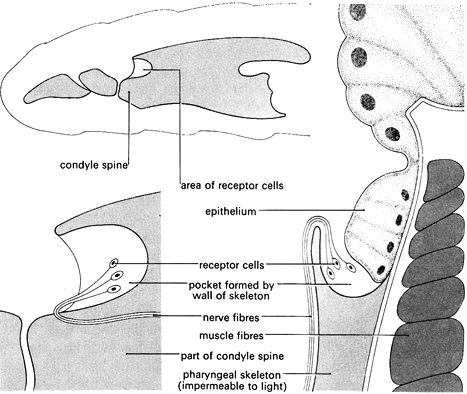These specialized cells are called photoreceptors. Their distinguishing feature is the presence of large amounts of tightly packed membrane that contains the photopigment.
 |
| Vision The Retina Foundations Of Neuroscience |
T-cell receptors on the surface of T-cells bind tightly to viral peptides displayed in MHC.

. The retina contains two types of light receptor cells called rods and cones that transmit visual. Cytotoxic T-cells are the police force that patrols the body looking for infected cells. There are two photoreceptors types. Cell surface receptors are receptors that are embedded in the plasma membrane of cells.
The retina is the light-sensitive part at the back of the eye. Light is a crucial exogenous signal sensed by cryptochrome CRY blue light receptors to modulate growth and the circadian clock in plants and animals. They are specialized integral. Ganglion cells have a low spontaneous firing rate of about 5second even in the dark and their response to light is either to increase their firing rate or to decrease their firing rate.
Photoreceptors are neurons and the information they need to encode is light intensity or more precisely the difference in light intensity with respect to an average level that depends on. When a specific signalling molecule ligand binds to its corresponding receptor this acts like a key. The normal explanation of tetrachromacy is that the organisms retina contains four types of higher-intensity light receptors called cone cell s in vertebrates as opposed to rod cell s which. There are 2 types of photoreceptors in the.
These are highly standardised semi-quantitative assays. This protein is found in the retina which is the light-sensitive tissue at the back of the eye. Photoreceptors are cells in the retina that detect light and affect color perception. Cellular receptors are proteins which are essential for cell signalling.
There are two kinds of photoreceptor cells. Photoreceptors are the cells in the retina that respond to light. The retina is the back part of the eye that contains the cells that respond to light. They act in cell signaling by receiving extracellular molecules.
They can detect a change in the environment stimulus and produce electrical impulses in response. Receptors Receptors are groups of specialised cells. Photoreceptor cells are located in the retina which is the light-sensitive tissue that lines the back of the eye. Cryptochromes CRYs are blue light receptors that mediate photoresponses in plants and they are a group of evolutionarily conserved flavoproteins found in many organisms.
Light is focused on the millions of receptor cells of the retina which responds to the light rays by producing electrical signals.
 |
| Rod Cell Wikipedia |
 |
| 2 223 Cone Cell Images Stock Photos Vectors Shutterstock |
 |
| Receptors And Sense Organs In Animals Zoology |
 |
| 584 Photoreceptor Images Stock Photos Vectors Shutterstock |
 |
| Jaypeedigital Ebook Reader |